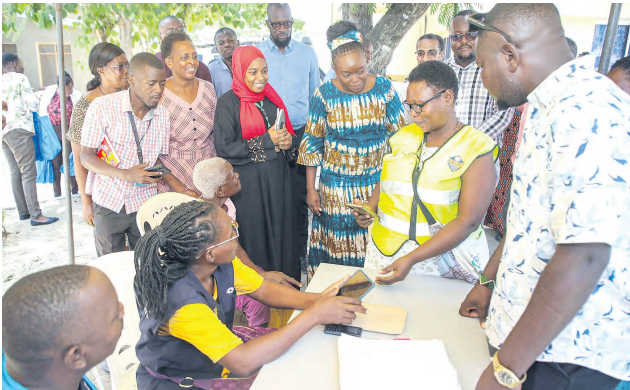
Good day, my dear reader. It’s been a minute, and I hope you have enjoyed reading some pieces from my guest writers on various topics. I do this often to nurture upcoming writers and also to add flavour and variety. Is SHA, SHIF, or is it Taifa Care, working?
What’s the difference among the three? These are questions that many Kenyans are asking. The best way to understand it is through the story of Mama Njeri who was recently diagnosed with diabetes and high blood pressure.
The 65-year-old lady selling second-hand clothes in Githurai enrolled for Taifa Care upon admission at Kenyatta University Referral Hospital.
According to the Means Testing Instrument, she is supposed to pay Sh1,030 each month, which she did upon admission.
She was admitted for four nights and upon discharge, with a bill of 89,650, SHIF was able to pay for her Sh22,400! This is a significant part of the bill! Indeed, SHIF is working! So, what’s the difference among Taifa Care, SHA and SHIF?
Taifa Care is the umbrella term for the universal healthcare programme. SHA stands for Social Health Authority, which is the body corporate administering the UHC.
SHIF stands for Social Health Insurance Fund, which is one of the three funds under Taifa care, whose registered members make a monthly contribution to access referral health services in levels 4, 5, and 6 hospitals.
The other two funds, namely the Primary Care Fund, and the Emergency and Critical Care Insurance Fund, get direct funding from the government.
So far, nine million Kenyans have been migrated from the defunct National Health Insurance Fund to the new Social Health Authority. Currently, the membership of Taifa Care has grown by more than 100 per cent to 19.5 million members.
This is nothing short of a vote of confidence for this critical pillar of the BETA PLAN, and it’s important for those who have not registered to do so to enjoy the full benefits of Taifa Care.
Several counties have done exceptionally well in registering high numbers of their population into Taifa Care with the top five being Mombasa 51.2 per cent, Bomet 42.2 per cent, Elgeyo Marakwet 41.8 per cent, Kirinyaga 39.7 per cent and Nyeri 39 per cent.
All the 19.5 million Kenyans registered under SHA, are covered by the Primary Healthcare Fund and need not pay for services in Levels 2 and 3 health facilities since the Government is paying for them.
Consequently, it’s concerning, though, that out of the 19.5 million registered members, only three million Kenyans in formal employment and one million Kenyans in the informal sector are making contributions to the Social Health Insurance Fund.
For Taifa Care to work effectively, it’s important for all unregistered Kenyans to do so, and most critically, make monthly payments to the SHIF to get referral services, including inpatient, ICU/HDU, cancer treatment, and renal care services, among others.
The minimum monthly premium remains Sh300 per household. To mitigate the challenge of non-payment by Kenyans in the informal sector and to ensure a flexible payment plan, either on a daily or weekly basis, the means testing instrument is under review to facilitate ease of payments and attain maximum accuracy, and therefore compliance, in individual categorisation.
Further, the Digital Health Authority, which is in charge of health records, has rolled out a training programme for health workers.
So far, 71 trainings have been carried out physically, while more than 11,000 health workers have been trained online. Feedback is key to continuously improve service delivery.
In this regard, the Supplementary Budget, which is under consideration by Parliament, proposes to increase the ICU/HDU package benefits from the current Sh4,300 to Sh28,000 per bed night.
The package for oncology care will also be increased from Sh400,000 to Sh550,000, if the proposal is passed by the august house. In addition, the Ministry of Health has also set up a Benefits Review Committee to consider other recommendations by Kenyans concerning Taifa Care.
It’s motivating that 95 per cent of the 47 counties have signed the Inter-Governmental Participating Agreements for the National Equipment Service Programme.
It is aimed at equipping health facilities with the requisite medical equipment to provide effective services country-wide. It’s true the recent suspension of funding by the US government to critical sectors of the economy, including healthcare, hadn’t been foreseen.
However, the government has put in place measures and mechanisms ensuring that critical services, such as providing medical care to HIV/Aids patients, goes on uninterrupted.
Recently, disease outbreaks such as mpox, measles, visceral leishmaniases (kala-azar or black fever), polio, and anthrax continue to pose a significant threat to public health, thus requiring a coordinated response by all actors. The country is also on high alert for Marburg and Ebola viruses reported in neighbouring countries.
While the government is doing all it can to ensure all the above diseases are under control and new measures aim to avert further spread, it’s important for each of us to take precautionary measures seriously.
The universal healthcare pillar, which is one of the five pillars of the BETA PLAN, will work better if we all make contributions to this public health insurance scheme to ease the disease burden on many Kenyans who are only one medical bill away from poverty.
The writer is the
government
spokesperson













